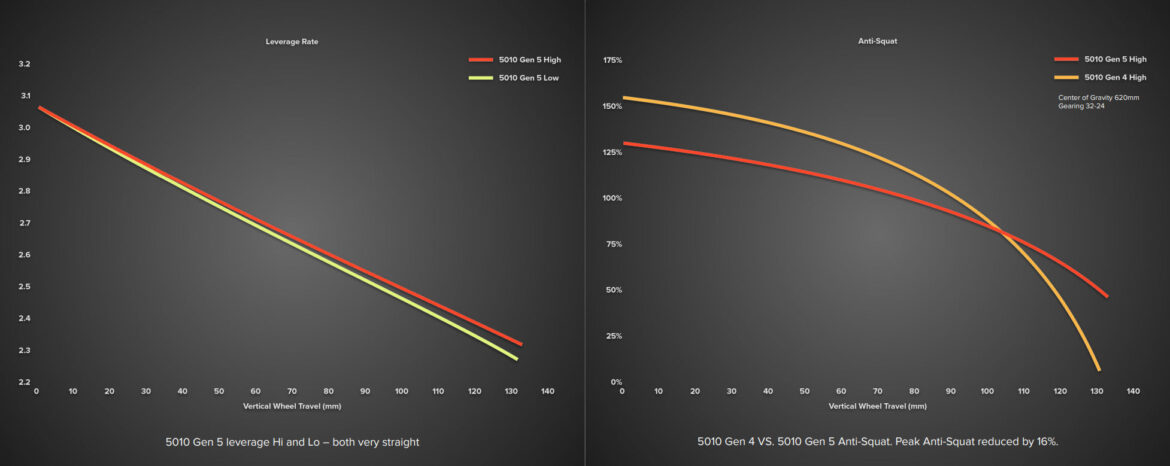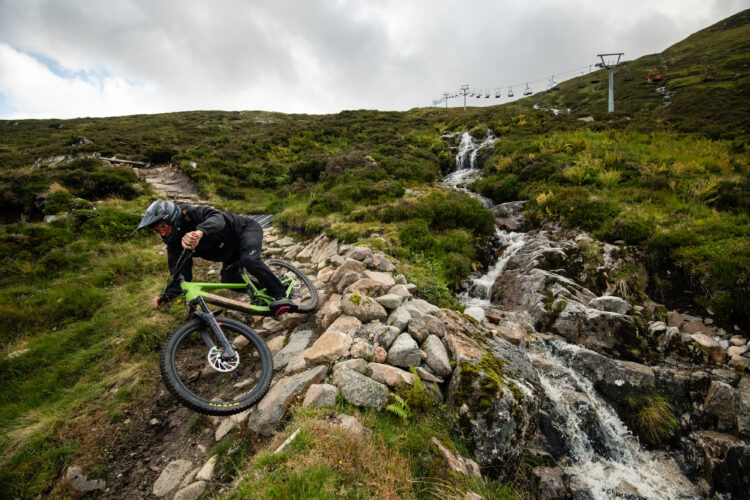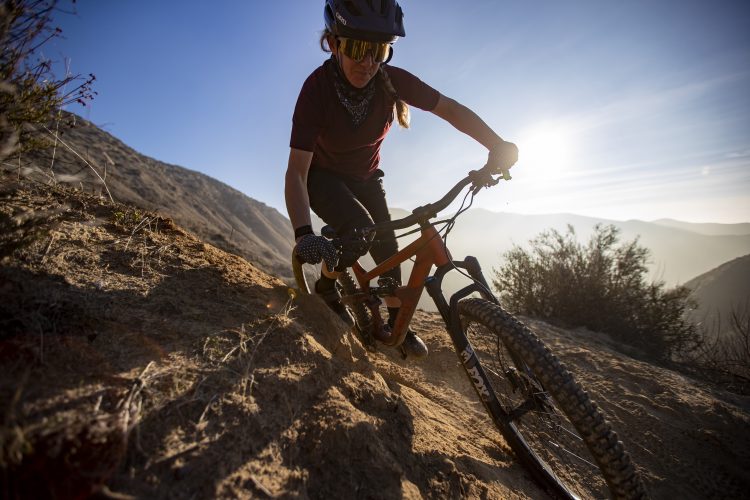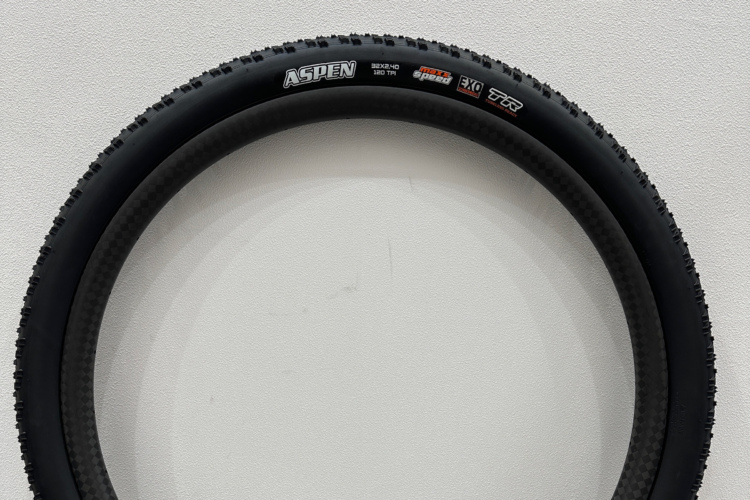Editor’s note: This article was originally written for and published by Steed Cycles.
This year has been a good year for new Santa Cruz bikes, and the 5010 is the fifth bike that the brand has revised and re-launched this year. Not content to let an older model sit untouched when they’ve learned so much from recent bikes, it makes more sense to roll out those changes and bring every bike up to spec so that every one of them rides as well as they can. Some of those changes to the latest Santa Cruz 5010 include in-frame storage, size-specific geometry, and some suspension tweaks, making this current batch of bikes the best Santa Cruz have ever made. So let’s get into it and see what makes the new 5010 special!
What’s new with the Santa Cruz 5010?
Well, the short answer is a lot of the same things we’ve already seen this year, because they’ve been working. The big news is that the 5010, like the Nomad, is now rocking a mixed-wheel setup. This means that there will be no dedicated 27.5″ bikes in the Santa Cruz lineup. But fear not 27.5 fans — the 5010 still retains that playful nature that you all love thanks to the rear 27.5″ wheel. The 29″ wheel up front serves to give the bike a little more purpose as an all-around trail bike, keeping it stable at speed and eating bumps for fun.
Following the changes we’ve seen on other recent bikes including the Nomad 6 and Hightower 3, the new 5010 has some cool new features including the Glovebox, Santa Cruz’s internal frame storage system. This storage space has room for a tube and other tools for emergencies, and the bike comes with a Tube Purse and Tool Wallet to keep things neat and tidy. Other sweet features include the shock window to see sag more easily and tube-in-tube routing in the rear triangle.
Size-specific lengths, angles, and frame stiffness
Keeping the 5010 current, we’re seeing a bunch of size-specific changes in-line with Santa Cruz’s other recent releases. These changes mean that the bikes should give the same riding experience no matter the rider size. Starting with the geometry, the 5010 carries across the size-specific chainstays from the old model to keep the fore-aft balance of the bike equal across the size range, as well as a size-specific seat tube angle to keep the cockpit equally spaced too.
Also on the size-specific front, the 5010 carbon frame layup is tailored to each size to give either a stiffer or more compliant ride quality depending on frame size, so each bike should feel roughly the same for any given rider size, from small to XXL.

Santa Cruz 5010 Geometry
The Geometry on the new 5010 hasn’t changed radically, however it’s different enough that combined with the mixed wheel setup, the bike rides significantly different from the old bike. Dropping the head angle by 0.6º to 64.9 in the low position and increasing the reach and chainstay lengths by up to 10mm across the range, the new 5010 should be a lot more stable and handle high speed trails better than the old bike. Staying the same is that low BB height for speedy cornering, and despite the longer chainstays the smaller rear wheel aids with the nimble handling.


Santa Cruz 5010 Suspension
Using the same lower link driven VPP suspension platform as the old bike, Santa Cruz is sticking with what the brand knows works, delivering great pedaling characteristics with great sensitivity and progression. Santa Cruz has however tweaked the suspension kinematics slightly to provide a better ride quality. Starting with anti-squat, the new 5010 has significantly less, particularly at the beginning of the stroke. What this means is improved traction on the climbs when you’re in the sag zone, wasting less energy spinning out and putting more useful power down. An added bonus is that this also reduces the effects of pedal kickback further into the travel.

Further suspension refinements include a slightly more progressive leverage curve, meaning the support ramps up the deeper the bike gets into its travel. A welcome change to a bike like this, it means for a shorter travel bike the rider can really push the limits of its capability without hitting a brick wall at the end of the travel with a harsh bottom out event.

Old news
The 5010 has some carry-over features that might be old news, but there’s a good reason for that. Why change what works? The trail bike still features 140/130mm of travel front and rear, respectively. Also, the old faithful threaded BB, a SRAM Universal Derailleur Hanger, Boost rear end, integrated headset, and a 31.6mm seat tube diameter are all here. The upper and lower link still use big chunky bearings with a lifetime warranty, meaning painless bearing services, and the frame has Santa Cruz’s famous lifetime warranty. What more could you want?
On the trail riding the new Santa Cruz 5010
I managed to get a quick ride on the 5010 before writing this post and while it wasn’t enough to form any solid opinions, it certainly gave me a feel for the bike. Swinging a leg over the bike during Crankworx this August in Whistler I was tasked with following the venerable Seb Kemp down his local trails with Garen nipping at my heels, both riding coil Nomads, and it’s fair to say they’re both pretty handy on a bicycle. It’s a fair task on any bike, let alone a shorter travel pocket knife like the 5010.

On the way up the 5010 was hardly a slouch. With a firmer feeling back end than the Hightower it wasted little energy in pedaling and felt snappy and responsive with all of Santa Cruz’s legendary VPP efficiency on forest road and singletrack alike. In all honesty I was needing any edge I could get in the fitness department that day so I was pretty happy to be pedaling a lighter, shorter travel bike up the hill. In undulating trails the Santa Cruz 5010 really shined, and I didn’t feel a need to reach for a climb switch. It was also a blast to rail the short downhills followed by punchy climbs.
Once the trails really pointed down I had the challenge of keeping up, and the Santa Cruz 5010 delivered. With the big front wheel and longer, slacker geometry, the 5010 does a great job of pretending to be a bigger bike than it is, giving confidence to push on but with all the easy handling of a lightweight bike with a small back wheel. I found it really easy to get airborne, almost with a preference for being in the air rather than on the ground. Nearly keeping pace with the bigger bikes wasn’t too much of a problem until the trail got a bit more choppy, which was to be expected, but the 5010 felt comfortable and not at all nervous in some silly steep sections.
Easy to ride and fun to push past its limits, the 2023 Santa Cruz 5010 makes a great trail bike for those wanting a little less travel and preferring a smaller rear wheel for a lighter, more nimble ride. Shouting and whooping my way down the trail, fun is the first word that comes to mind after riding the latest 5010.

Santa Cruz 5010 build and spec
Currently the 5010 v5 is available with C and CC carbon frame options in frame sizes XS through XXL and two colors — Matte Grey and Gloss Red. There are four build kits with carbon wheel options for the two highest levels.
Starting with the R build kit every bike comes with the new Rockshox Pike and a 12spd SRAM Eagle drivetrain. In this spec the bike comes with the Pike base, a Fox Float DPS Performance shock, an NX Eagle drivetrain and Race Face Arc rims on SRAM MTH hubs. Moving up the the S-build you get a Pike Select+ with the new Charger 3 damper, a Super Deluxe Select+ shock, a GX Eagle drivetrain and a hub upgrade to DT Swiss 370. The GX AXS spec comes with the same fork and shock but SRAM’s wireless AXS version of that GX drivetrain and a hub upgrade to Industry Nine 1/1 with an option to upgrade to carbon Reserve 30 HD wheels.
Moving up to Santa Cruz’s lighter CC frame we have the X01 build spec, and on this build suspension is taken care of with a Pike and Super Deluxe Ultimate. The drivetrain is SRAM’s X01 mechanical group and it runs the Race Face/I9 wheels. The top of the line CC X01 AXS RSV build runs the same suspension but with SRAM’s wireless X01 drivetrain and Reserve 30 wheels. It’s a pretty sweet package.

- Price: Starts at $5,300 for complete R build with a C frame and tops out at $10,649 for a complete SRAM AXS RSV build with a CC frame.
- Buy from Santa Cruz dealers or online from Competitive Cyclist.












0 Comments